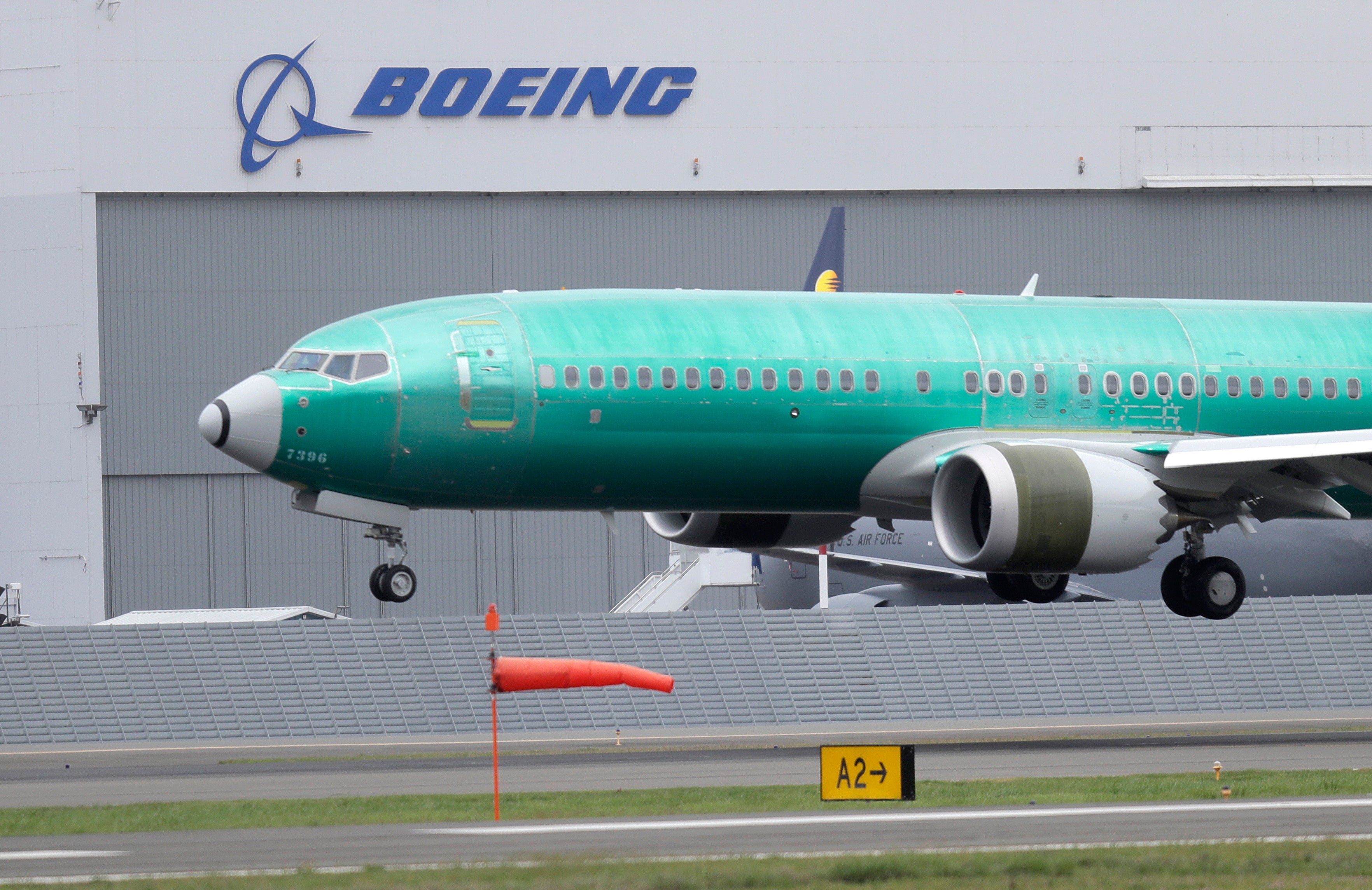Investigators say they confirmed pilots' account of a rudder-control failure on a Boeing Max jet
Federal investigators have confirmed an account by pilots who say the rudder controls on their Boeing Max jetliner failed during a landing last month

Your support helps us to tell the story
From reproductive rights to climate change to Big Tech, The Independent is on the ground when the story is developing. Whether it's investigating the financials of Elon Musk's pro-Trump PAC or producing our latest documentary, 'The A Word', which shines a light on the American women fighting for reproductive rights, we know how important it is to parse out the facts from the messaging.
At such a critical moment in US history, we need reporters on the ground. Your donation allows us to keep sending journalists to speak to both sides of the story.
The Independent is trusted by Americans across the entire political spectrum. And unlike many other quality news outlets, we choose not to lock Americans out of our reporting and analysis with paywalls. We believe quality journalism should be available to everyone, paid for by those who can afford it.
Your support makes all the difference.Federal investigators said Thursday they confirmed pilots' account of a brief failure of rudder controls on a Boeing 737 Max after it landed at Newark Liberty International Airport in New Jersey last month.
United Airlines pilots said pedals that control rudder movement on the plane were stuck as they tried to keep the plane in the center of the runway during the Feb. 6 landing.
The pilots were able to use a small nose-gear steering wheel to veer from the runway to a high-speed turnoff. The rudder pedals began working again as the pilots taxied to the gate with 155 passengers and six crew members on the flight from Nassau, Bahamas, according to a preliminary report by the National Transportation Safety Board.
The NTSB said preliminary information from the plane's flight data recorder, one of the so-called black boxes, confirmed the captain's description of the event. United was able to recreate the same problem on the 2-year-old plane during a test flight at the Newark airport three days later, and reported the problem to the NTSB.
Mechanics couldn't find an obvious cause for the malfunction during an inspection, but they replaced parts of the rudder control system, and the plane operated normally during a second test flight, the NTSB said. The plane has made dozens of passenger-carrying flights since then, according to data from FlightAware.
The NTSB said that when it subjected one of the removed parts to cold for one hour in a laboratory, it failed to produce the torque needed for the rudder pedals to work. The NTSB said it plans further testing of the part.
Pedals in the cockpit control the rudder, which is attached to the vertical part of the tail and can be used to point the nose of the plane left or right.
United, Boeing, parts supplier Collins Aerospace and the Federal Aviation Administration are taking part in the ongoing investigation. Boeing and Collins did not immediately comment.